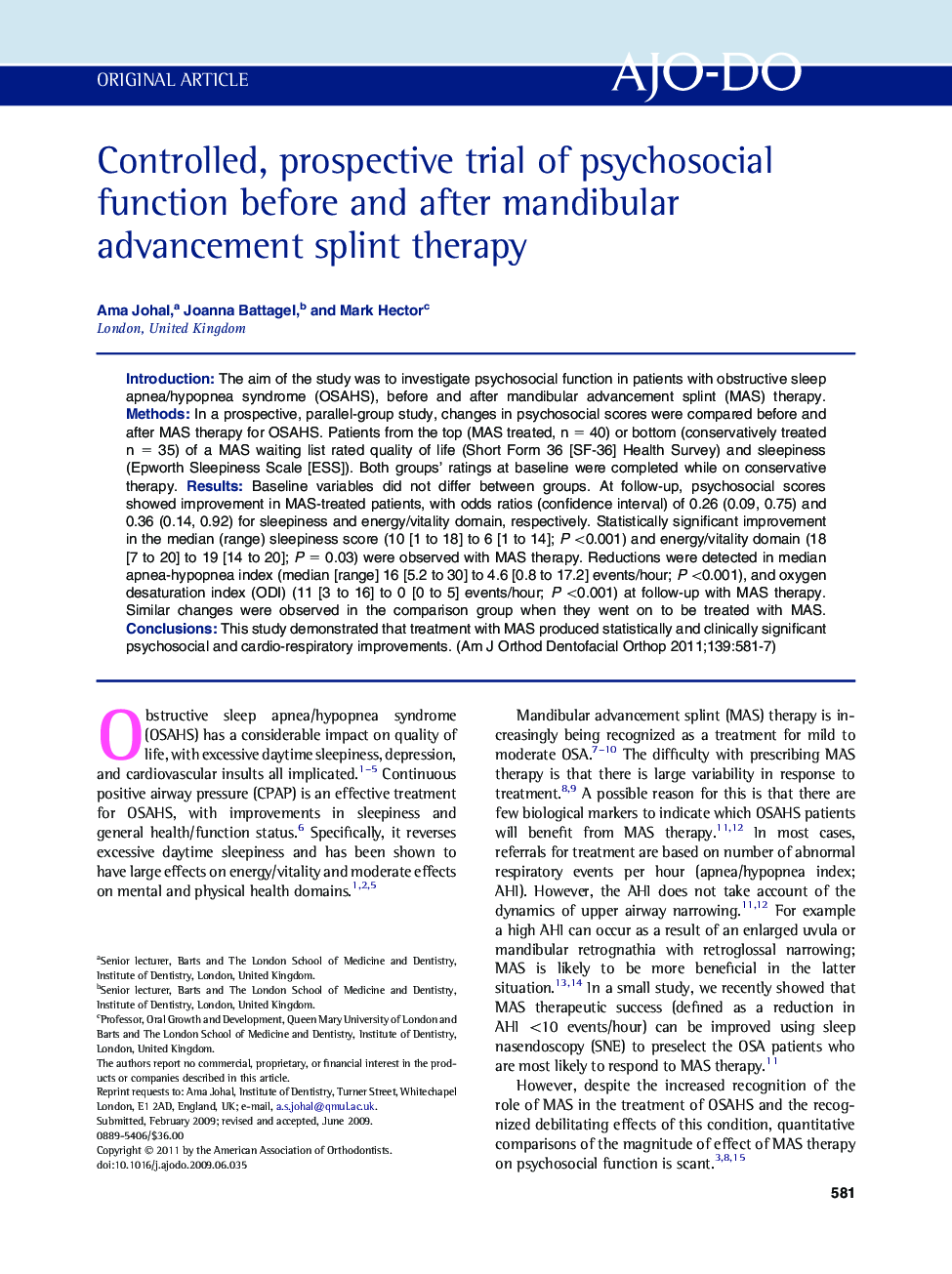| Article ID | Journal | Published Year | Pages | File Type |
|---|---|---|---|---|
| 3118753 | American Journal of Orthodontics and Dentofacial Orthopedics | 2011 | 7 Pages |
IntroductionThe aim of the study was to investigate psychosocial function in patients with obstructive sleep apnea/hypopnea syndrome (OSAHS), before and after mandibular advancement splint (MAS) therapy.MethodsIn a prospective, parallel-group study, changes in psychosocial scores were compared before and after MAS therapy for OSAHS. Patients from the top (MAS treated, n = 40) or bottom (conservatively treated n = 35) of a MAS waiting list rated quality of life (Short Form 36 [SF-36] Health Survey) and sleepiness (Epworth Sleepiness Scale [ESS]). Both groups’ ratings at baseline were completed while on conservative therapy.ResultsBaseline variables did not differ between groups. At follow-up, psychosocial scores showed improvement in MAS-treated patients, with odds ratios (confidence interval) of 0.26 (0.09, 0.75) and 0.36 (0.14, 0.92) for sleepiness and energy/vitality domain, respectively. Statistically significant improvement in the median (range) sleepiness score (10 [1 to 18] to 6 [1 to 14]; P <0.001) and energy/vitality domain (18 [7 to 20] to 19 [14 to 20]; P = 0.03) were observed with MAS therapy. Reductions were detected in median apnea-hypopnea index (median [range] 16 [5.2 to 30] to 4.6 [0.8 to 17.2] events/hour; P <0.001), and oxygen desaturation index (ODI) (11 [3 to 16] to 0 [0 to 5] events/hour; P <0.001) at follow-up with MAS therapy. Similar changes were observed in the comparison group when they went on to be treated with MAS.ConclusionsThis study demonstrated that treatment with MAS produced statistically and clinically significant psychosocial and cardio-respiratory improvements.
